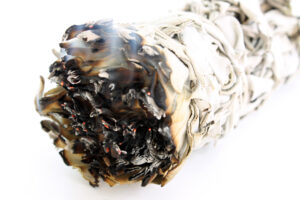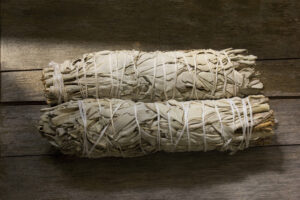The practice of smudging dates back to prehistoric times, and is still very much in use today worldwide for cleansing everything from dwellings to human spirits. However recent research has shed light on the popularity of this activity, revealing that burning certain plant matter actually clears harmful bacteria.

In this way, the practice was used to clear spiritual and emotional negativity that has built up in a body or a space.
Of course, there are skeptics who belittle the practice as unscientific and akin to magic.
The practice has a negative association to a form of cultural imperialism, where traditions of dwindling indigenous populations are co-opted by the descendants of those who more-or-less conquered them.
The scientific paper entitled “Medicinal Smokes” and published in the Journal of Ethnopharmacology focuses a scientific lens on the practice, which is becoming more and more widely practiced, despite skepticism.
It serves to play against the role that this activity has played in a culturally diverse range of religions and tribal beliefs.
The research study looked into herbal and non-herbal remedies that were administered by the burning of various matter.
The research included information from 50 countries over 5 continents and found that, predominantly, smoke administered medicinally is mostly used to aid lung, brain and skin function. In addition, it was revealed that passive fumes doubled as a sort of air purifier.
The purpose of the study was to see whether or not these medicinal smoke deliveries could be explored by western medicine, because “The advantages of smoke-based remedies are rapid delivery to the brain, more efficient absorption by the body and lower costs of production.”

“We have observed that 1 hour treatment of medicinal smoke emanated by burning wood and a mixture of odoriferous and medicinal herbs (havan sámagri=material used in oblation to fire all over India), on aerial bacterial population caused over 94% reduction of bacterial counts by 60 min and the ability of the smoke to purify or disinfect the air and to make the environment cleaner was maintained up to 24 hour in the closed room.
Absence of pathogenic bacteria Corynebacterium urealyticum, Curtobacterium flaccumfaciens, Enterobacter aerogenes (Klebsiella mobilis), Kocuria rosea, Pseudomonas syringae pv. persicae, Staphylococcus lentus, and Xanthomonas campestris pv. tardicrescens in the open room even after 30 days is indicative of the bactericidal potential of the medicinal smoke treatment.
We have demonstrated that using medicinal smoke it is possible to completely eliminate diverse plant and human pathogenic bacteria of the air within confined space.”
In short, burning medicinal herbs cleared airborne bacterial populations by 94%, and the space was still found to be disinfected a day later. What’s more, a month after smudging, much of the pathogens originally found were still undetectable.
This has profound implications, as modern air quality in the developed and undeveloped world is atrocious, containing up to 1800 bacterial types, many of them pathogenic. With an increasing deadly array of antibacterial-resistant strains, we’ll need all the help we can get.
Conventional methods of sterilization often employ chemical cocktails that are typically much less effective than purported. Smudging seems to be an effective alternative, while also being natural and safe to use.
In conclusion, the ancient practice of burning powerful herbal material may be much much more than just a primitive belief that we can simply disregard due to it being unscientific.
Of course, this should not take away from the properties of smudging in the area of energy system and soul cleansing and in the power of aromatherapy.
Original article and credits: TheSpiritScience.net
